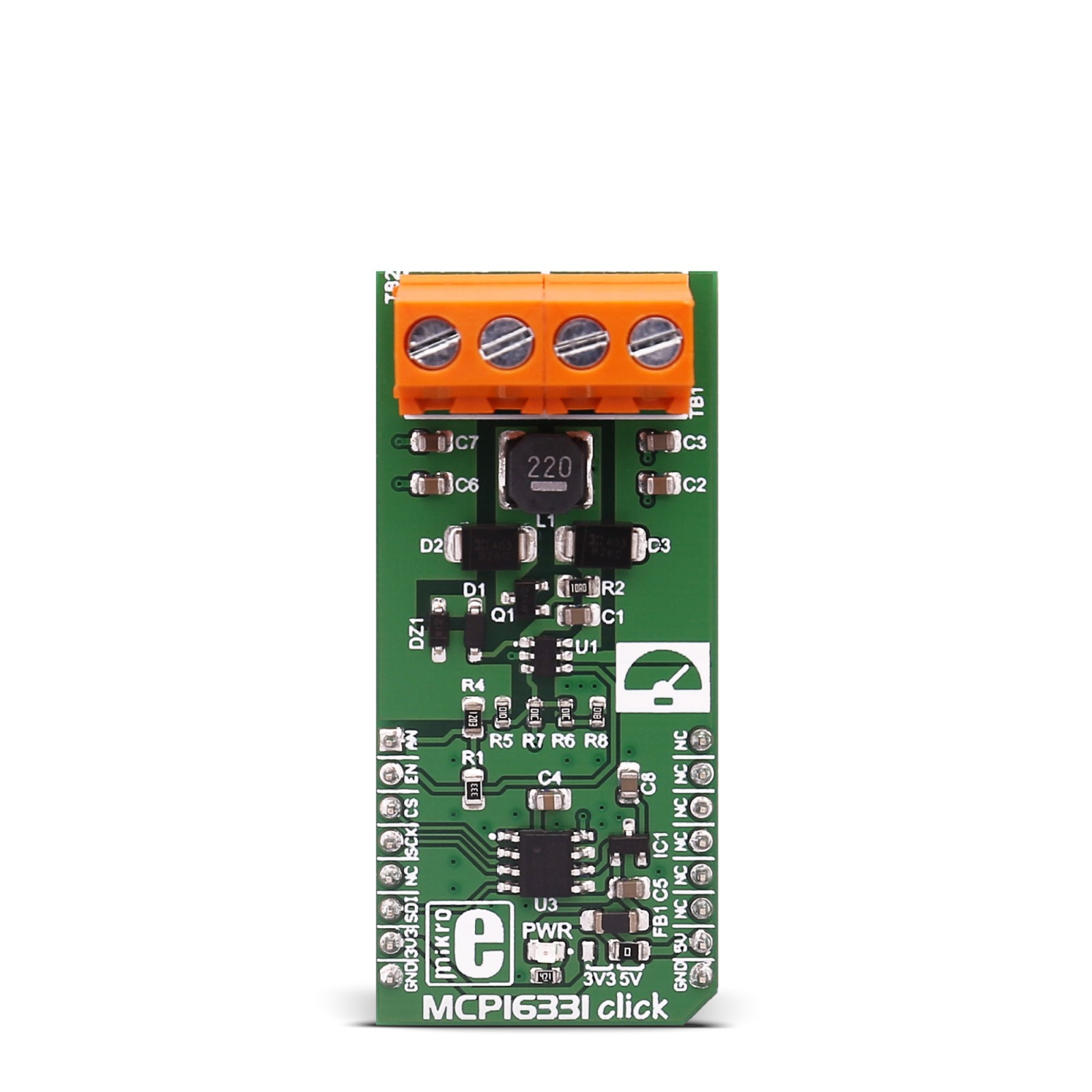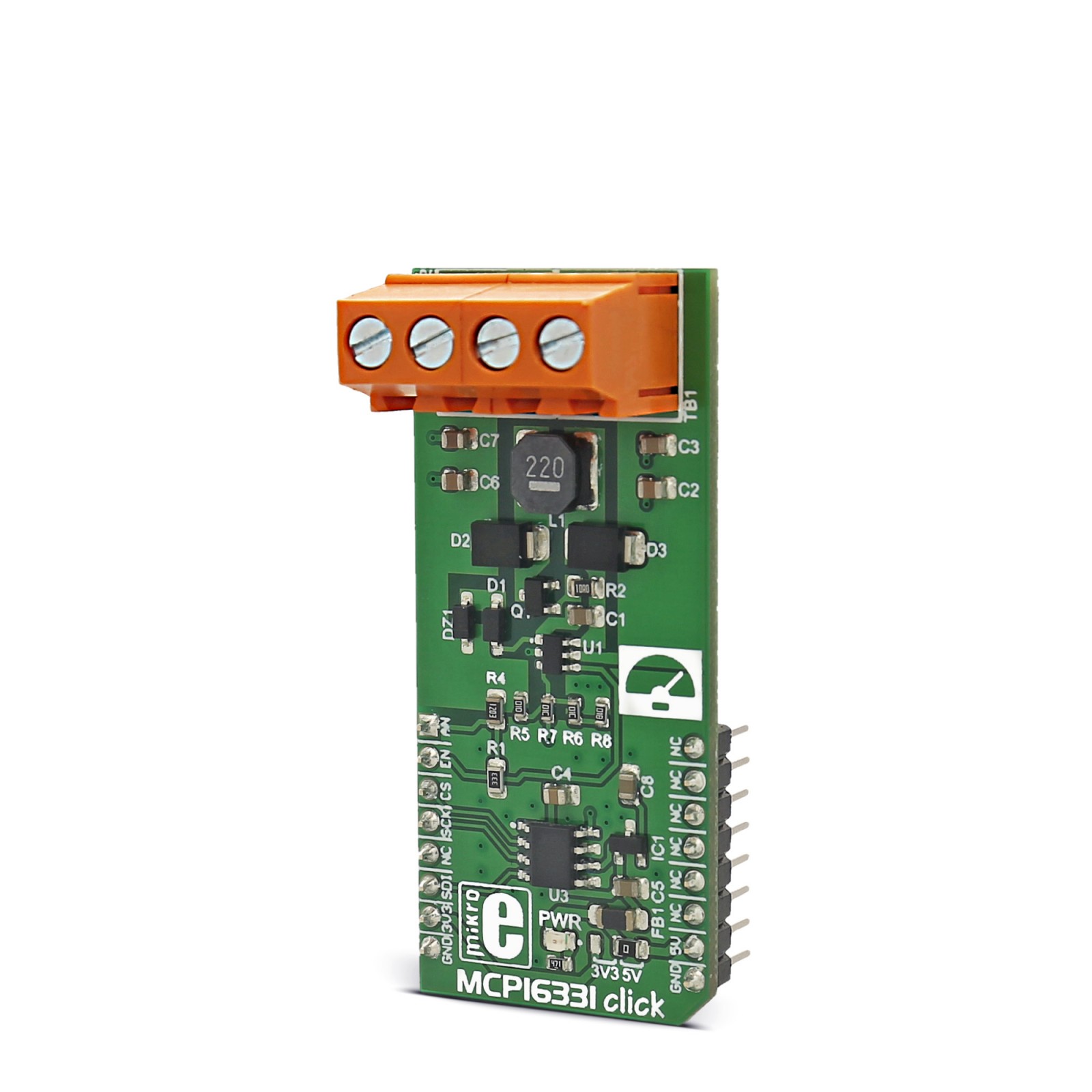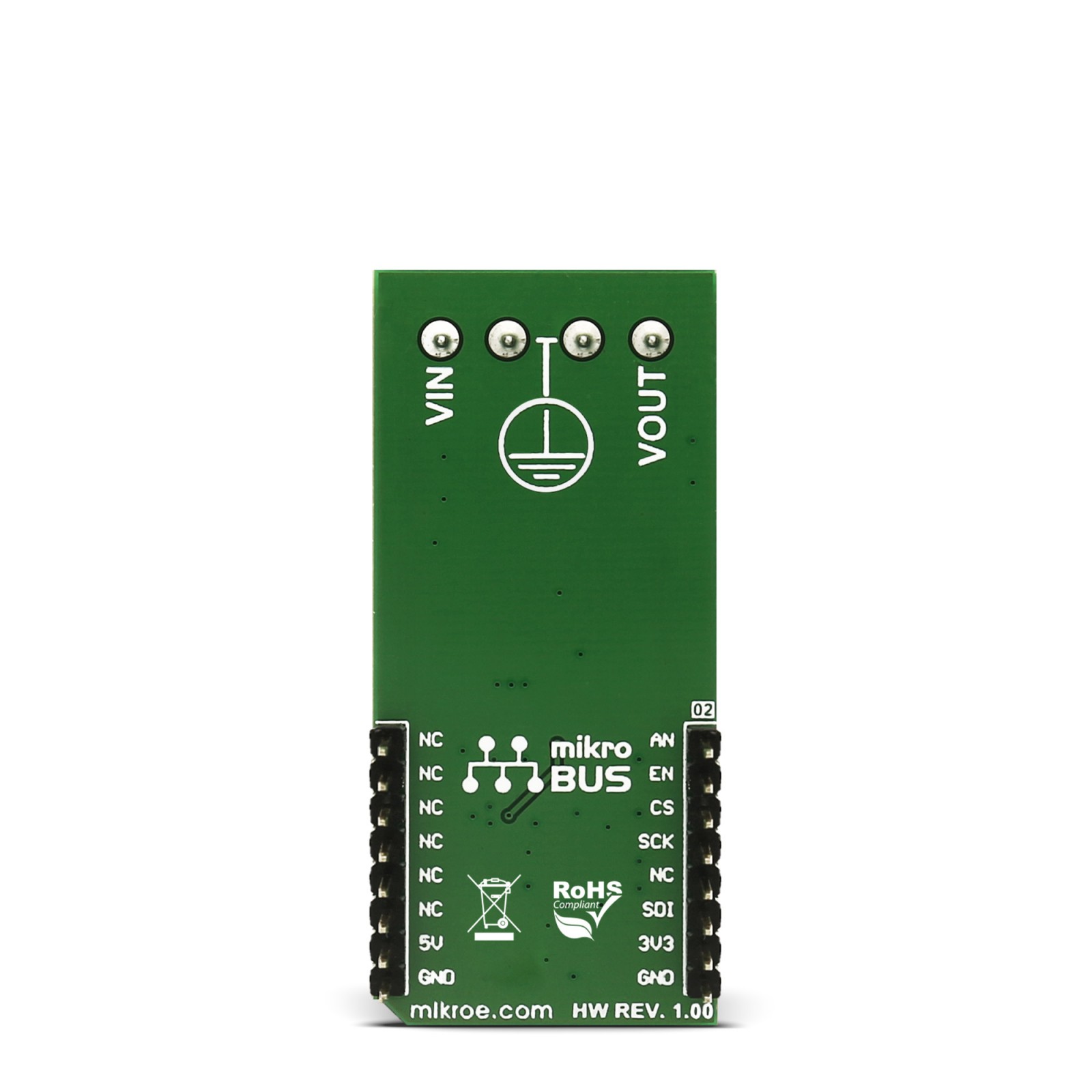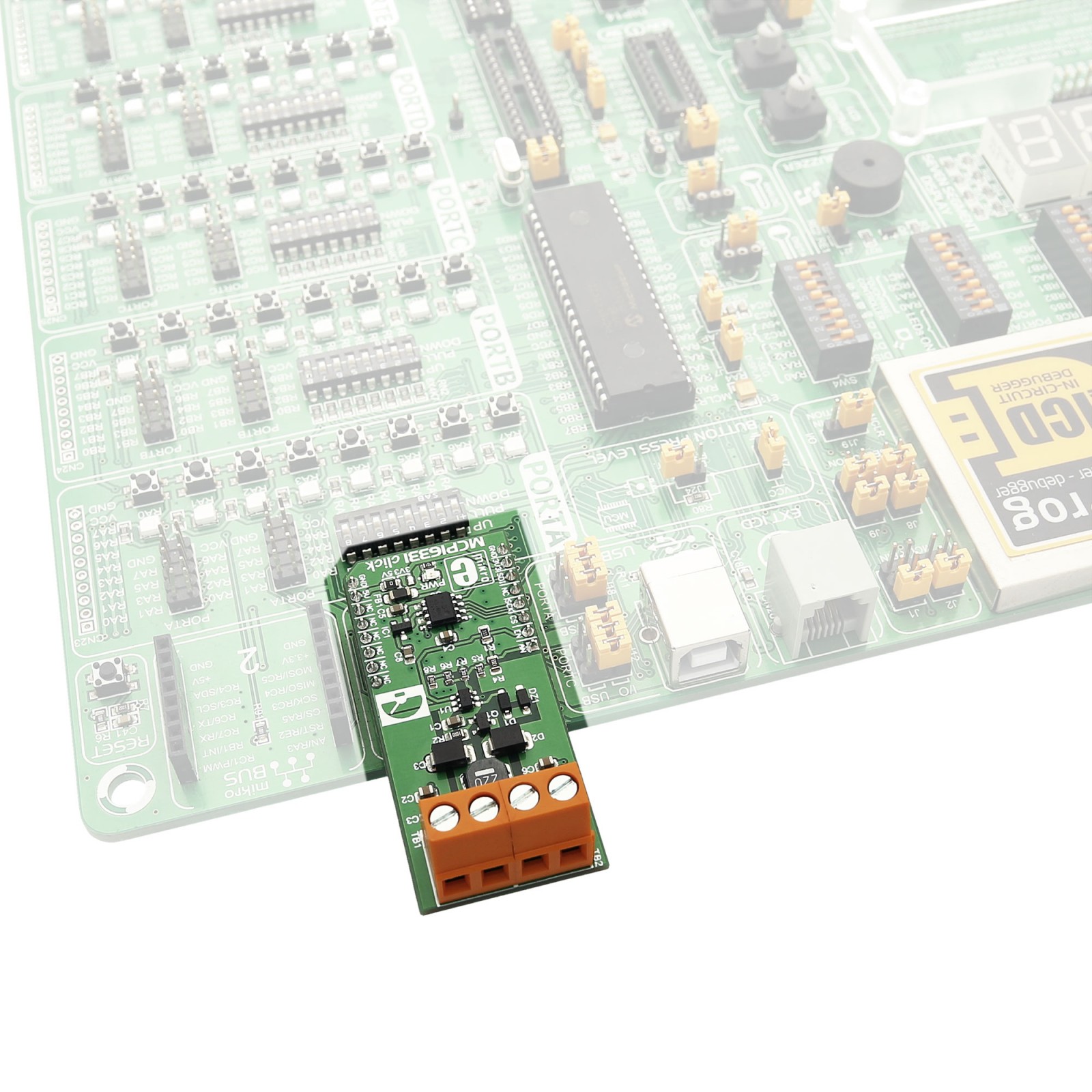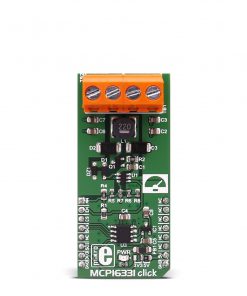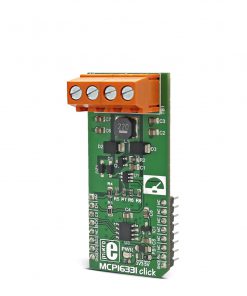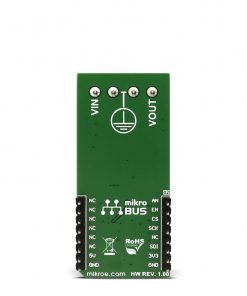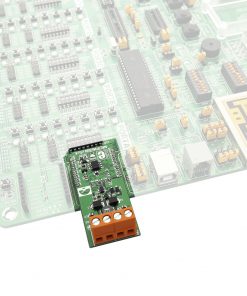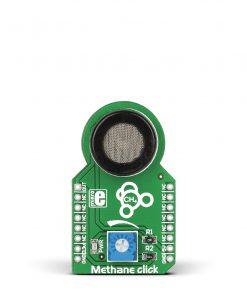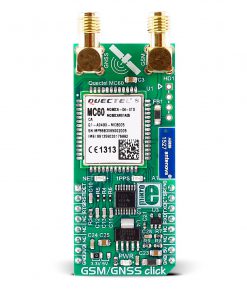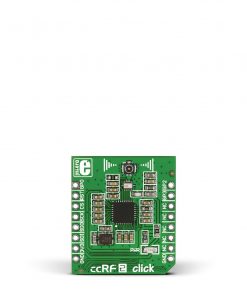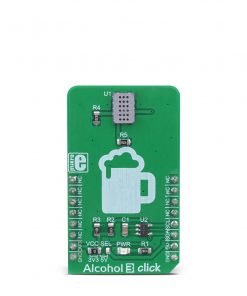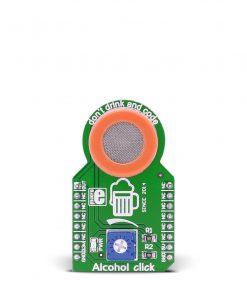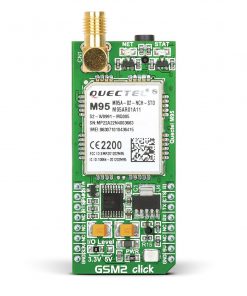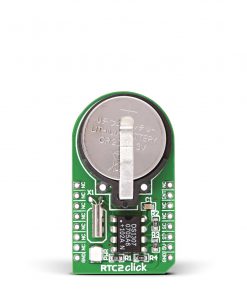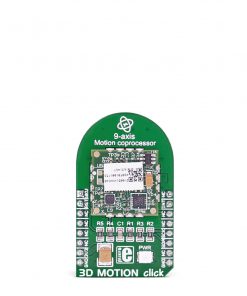MCP16331 Click
R485.00 ex. VAT
MCP16331 click functions as a buck-boost voltage regulator, a switching regulator topology that combines principles of the buck conversion (step-down) and the boost conversion (step-up).
A buck converter outputs voltage that is smaller than the input voltage (steps down the input voltage). A boost converter outputs voltage that is greater than the input voltage (steps up the input voltage).
By combining these two topologies, MCP16331 click is able to output a regulated DC voltage, which can be set in the code, for input voltage both greater and less than the output voltage.
Stock: Lead-time applicable.
| 5+ | R460.75 |
| 10+ | R436.50 |
| 15+ | R412.25 |
| 20+ | R396.73 |
MCP16331 click functions as a buck-boost voltage regulator, a switching regulator topology that combines principles of the buck conversion (step-down) and the boost conversion (step-up).
A buck converter outputs voltage that is smaller than the input voltage (steps down the input voltage). A boost converter outputs voltage that is greater than the input voltage (steps up the input voltage).
By combining these two topologies, MCP16331 click is able to output a regulated DC voltage, which can be set in the code, for input voltage both greater and less than the output voltage.
A typical application for a buck-boost regulator is a battery-powered system, where the input voltage can vary widely, starting at full charge and gradually decreasing as the battery charge is used up. At full charge, where the battery voltage may be higher than needed by the circuit, a buck regulator would be ideal to keep the supply voltage steady.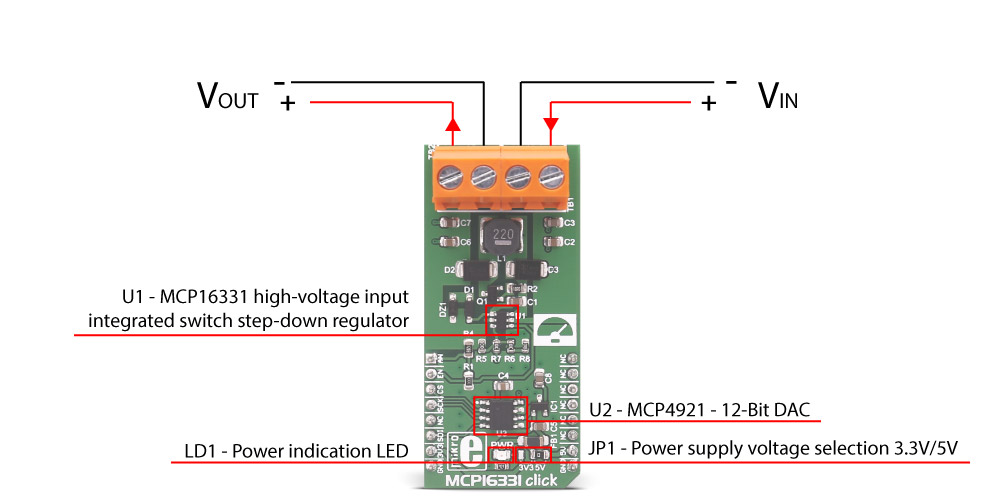
Figure 1
However as the charge diminishes the input voltage falls below the level required by the circuit, and either the battery must be discarded or re-charged; at this point, the ideal alternative would be the boost regulator.
By combining these two topologies, it is possible to have a regulator circuit that can cope with a wide range of input voltages both higher or lower than that required by the circuit.
How the MCP16331 click works
This click board™ central module is the Microchip’s MCP16331, a non-synchronous, step-down or buck converter, capable of stepping input voltages ranging from 4.4V to 50V, and output voltage ranging from to 2.0V to 24V. More details about the MCP16331 are available in the official datasheet. However, MCP16331 click is designed to handle an input voltage ranging from 4.5V to 18V and output a voltage ranging from 2,25V to 12V at 500 mA maximum current, since it works in a buck-boost topology.
To set the output voltage of the MCP16331 click, the MCP4921 – a low power 12-Bit dual voltage output DAC is used in the feedback loop. The output of this DAC is used to drive the FB pin of the MCP16331, so in order to set up the output voltage, it is enough to set the DAC output to a specific value. This will cause the FB pin to drive the switching section of the MCP16331 which will output a desired voltage level, as a result. The AN pin of the mikroBUS™ can be used to verify the output voltage and correct the value given to the DAC, if needed. The MCP4291 DAC can be configured by the host MCU via the SPI bus pins, routed to the mikroBUS™.
The AN pin of the mikroBUS™ is routed to a middle point of a voltage divider on the output. This voltage divider is used to scale down the output voltage so it can be successfully converted by the ADC of the host MCU. Besides the bit depth of the ADC, this should also be taken into account when calculating the value for the output voltage.
The MCP16331 click has two screw terminals used to connect the input voltage and the load, as well as the SMD jumper used to select the voltage for the DAC IC. This affects the SPI logic voltage levels, so both 3.3V and 5V MCUs can be used with this click board™
NOTE: To avoid any possible damage to any load connected to the VOUT terminal, you must follow the correct power-up sequence:
- Disable the MCP16331 by setting the mikroBUS™ pin RST (EN) low (GND)
- Set the desired output voltage via SPI (see the software section below)
- Enable the MCP16331 by setting the mikroBUS™ pin RST (EN) high (5V)
The reason for this sequence is that the enable pin (EN) of the MCP16331 has an internal pull-up resistor that keeps the MCP16331 output stage enabled even if the pin is left unconnected. At power-up, before you set the voltage via SPI, DAC output is unspecified and the output voltage may set higher than what your load supports.
Libraries, provided with the MCP16331 click will allow for simple and effortless setup of the necessary parameters. The included demo application can be used as a reference for future designs, and it demonstrates the functionality of the click board™, as well as the included software libraries.
Specifications
Type
Buck
Applications
Battery-powered system, where the input voltage can vary widely, starting at full charge and gradually decreasing as the battery charge is used up
On-board modules
MCP16331 high-voltage input integrated switch step-down regulator
Key Features
High efficiency during step-down, ajustible voltage output, undervoltage lockout
Interface
SPI
Feature
No ClickID
Compatibility
mikroBUS™
Click board size
L (57.15 x 25.4 mm)
Input Voltage
3.3V or 5V
Pinout diagram
This table shows how the pinout on MCP16331 click corresponds to the pinout on the mikroBUS™ socket (the latter shown in the two middle columns).
MCP16331 click maximum ratings
| Description | Min | Typ | Max | Unit |
|---|---|---|---|---|
| Input Voltage Range (VIN) | 4.5 | 18 | V | |
| Output Voltage Range (VOUT) | 2.25 | 12 | V | |
| Output current | 500 | mA | ||
| Switching Frequency | 500 | kHz | ||
| Efficiency | 96% |
Onboard settings and indicators
| Label | Name | Default | Description |
|---|---|---|---|
| TB1 | VIN | – | Voltage input screw terminal |
| TB2 | VOUT | – | Voltage output screw terminal |
| JP1 | PWR.SEL. | 3.3V | Power supply voltage selection 3V3/5V, left position 3V3, right position 5V |
| LD1 | PWR | – | Power LED, lights green when the power supply is established properly |
Software Support
We provide a library for the MCP16331 click on our LibStock page, as well as a demo application (example), developed using MikroElektronika compilers. The demo application can run on all the main MikroElektronika development boards.
Note: depending on the development board you are using, you may need the RS232 click or USB-UART click or USB UART 2 click, to connect to your PC. The terminal available in all MikroElektronika compilers, or any other terminal application of your choice, can be used to read the message.
Library Description
The library carries a function for controlling the MCP16331 click output alongside with SPI driver initialization function.
Key functions
void mcp16331_setVout(uint16_t millivolt )– Sets voltage on outputs
Examples Description
The application is composed of three sections:
- System Initialization – Initializes GPIO and SPI peripheral, but also and UART used for information logging.
- Application Initialization – Driver initialization.
- Application Task – (code snippet) Periodically changes the output voltage in the range from 5V to 12V. Information about the current output voltage is logged on UART.
void applicationTask() { mcp16331_setVout( 5000 ); UART1( "rnOutput Voltage changed to 5V" ); Delay_ms( 3000 ); mcp16331_setVout( 12000 ); UART1( "rnOutput Voltage changed to 12V" ); Delay_ms( 3000 ); }
The example also carries additional functions for GPIO control which are provided during driver initialization. These functions are necessary and implementation depends on development system used.
Other MikroE Libraries used in the example:
- UART
The full application code and libraries are available for download on our LibStock page.
Resources
Downloads
| Weight | 21 g |
|---|---|
| Brand | MikroElektronika |

